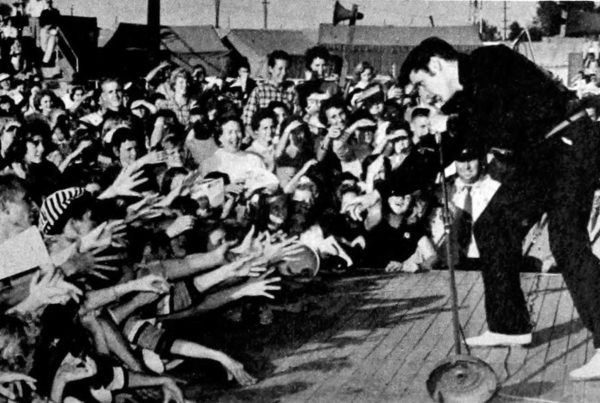From KUTX:
On Sept. 11, 12, and 13, 1975, New Orleans pianist Professor Longhair played the Soap Creek Saloon, a ramshackle honky tonk in the west Austin hills on what was then a sleepy Bee Caves Road. This was a bit of a comeback for Fess, as he was known, an artist who in the 1950s had ushered in a distinctly Caribbean-influenced New Orleans style of R&B that Fess’s colleague Dr. John described as “rhumba-boogie funk.”
Professor Longhair had worked steadily in the immediate post-war period, but he disappeared from the scene for a while by the late 1960s. Fess reemerged in 1971 to play the New Orleans Jazz and Heritage Festival, and his bookings began to increase in the U.S. and Europe.

Meanwhile in Austin, audiences had welcomed musicians from Louisiana for generations. Cajun fiddler Harry Choates made the city his home in the 1950s, and Austin’s home of the blues, Antone’s nightclub, opened in the summer of 1975 with performances by Clifton Chenier, the Louisiana-born, Houston-based zydeco pioneer.
Soap Creek Saloon, with its small capacity and remote location, attracted a locals-only crowd and mostly regional acts like Doug Sahm, Augie Meyers, and Louisiana expat Marcia Ball. With its monthly calendars crafted by artist Kerry Awn, Soap Creek Saloon’s program was plastered about town with a psychedelic comic book aesthetic.
In addition to Professor Longhair, Soap Creek Saloon also booked the Meters for a total of six performances between June 1975 and February 1976, making Soap Creek a little outpost of New Orleans in Austin.
Professor Longhair’s 1970s resurgence culminated in the recording of his first proper LP, Crawfish Fiesta. Unfortunately, Fess passed away one day before its release on Jan. 30, 1980, but the album did win him a posthumous, and much-deserved, Grammy later in the decade.













